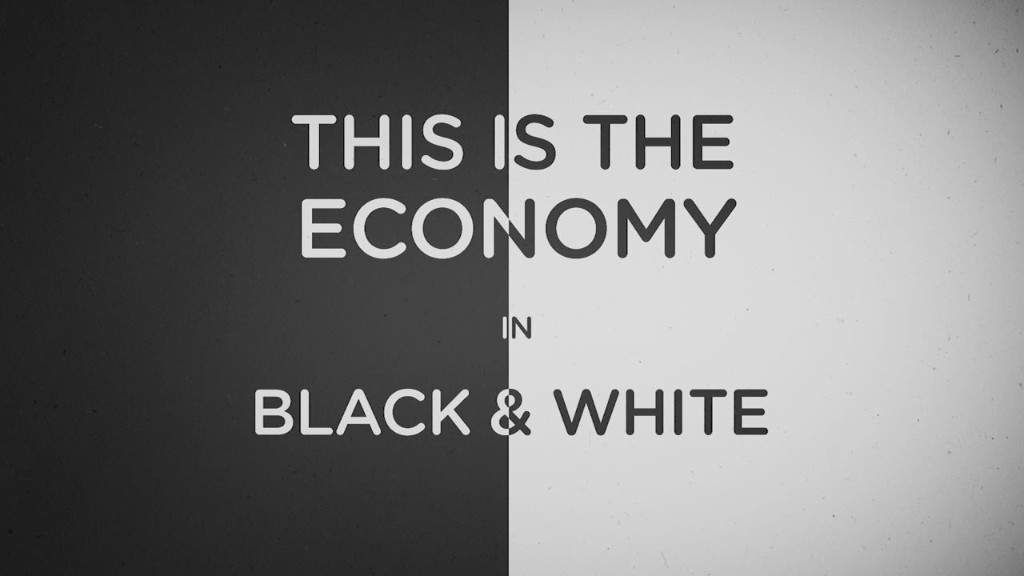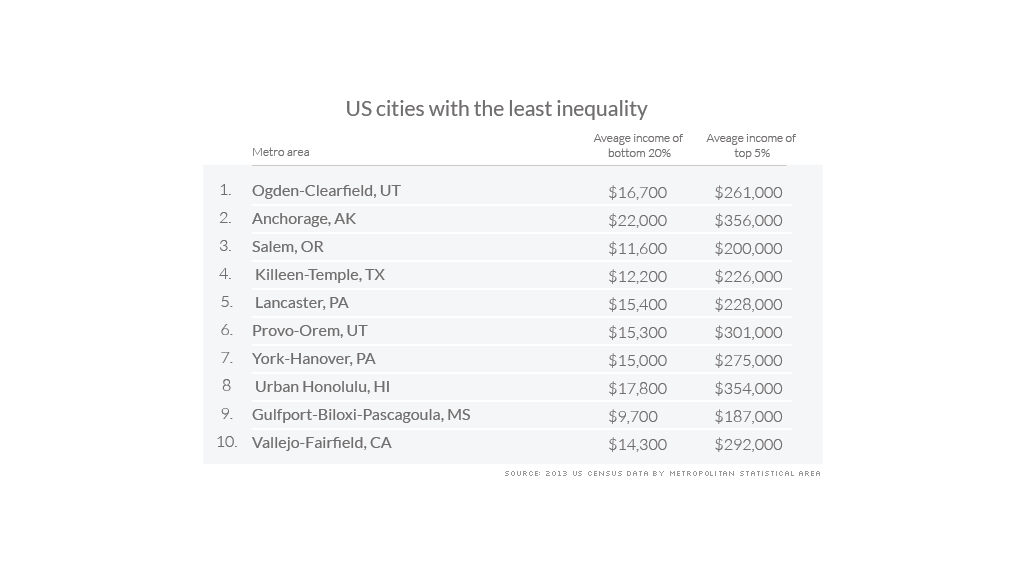
Miami, New York City, Los Angeles.
These are great American cities with rich cultural histories. Their iconic skylines are well known in movies and street signs, and they attract tourists and celebrities from around the world.
But they also have the unfortunate distinction of being three of the most unequal places in America. The gap between the rich and the poor is vast.
In the New York City metropolitan area, roughly four million people live on $12,300 or less, according to Census Bureau data. That's below the poverty line for a family. On the flip side, New York is also home to the most billionaires in the world.
The reality is these grand cities symbolize the American Dream around the world, but the day-to-day reality leaves many behind.
As the conversation about income inequality rises in America, it's worth taking a look at where the gap is the biggest...and the smallest.
Related: What economic equality looks like in America
New York doesn't actually top the list of cities with big inequality problems. That distinction goes to Bridgeport-Stamford, Connecticut, an area that is home to many hedge funds and investment managers.

In that metropolitan area in Connecticut, the richest 20% of households hold nearly 60% of the city's income. No other American urban area has that amount of wealth concentrated in the hands of the elite.
To put it in perspective, in the big U.S. metropolitan area with the least inequality (Ogden-Clearfield, Utah), the wealthiest 20% of households only take in about 40% of the income.
How do economists determine inequality? When people try to compare cities -- or even countries -- based on how much inequality there is, they look at something known as the Gini Coefficient. Named after an Italian economist, Corrado Gini, this metric takes into account how much income the wealthy, middle class and poor hold.
A Gini Coefficient of 0 would mean that everyone in the town had the same income. A coefficient of 1 would signal that one person or family had just about everything while everyone else had nothing.
Related: Black-white wealth gap widens
The United States overall has a Gini Coefficient of 0.45. America's 10 metropolitan areas with the greatest inequality have Gini Coefficients of about 0.5 (Los Angeles, CA) to 0.55 (Bridgeport-Stamford, Conn.), according to the most recent Census data.
The 'best' cities: While Americans are increasingly aware of inequality, few take the time to look at the other side the equation: Which cities appear to be getting it right? Where is the gap between the rich and the poor slimmer?

Many of these urban areas -- while having at least 300,000 residents -- are not as well known. They are places like Anchorage, Alaska and Salem, Oregon. They are economic hubs for their states, but they tend not to have as many Fortune 500 type companies and the large executive salaries that go with them.
The gulf between what the poorest residents earn and the wealthiest is noticeably smaller in these locales. The income of the poor is clearly higher in most of these 10 cities and, even more strikingly, the elite typically earn $356,000 or less.
Of course, each city has to be considered on a case-by-case basis. There are negative reasons why a city could end up having a low Gini Coefficient. Honolulu, Hawaii looks like one of the best when looking at Gini metrics, but the high cost of living in the state can make life even more difficult for the poor.
Similarly, an area like Gulfport-Biloxi, Miss. has lower incomes, on average, than much of the rest of the country. Depressed wages are a different kind of economic problem.


